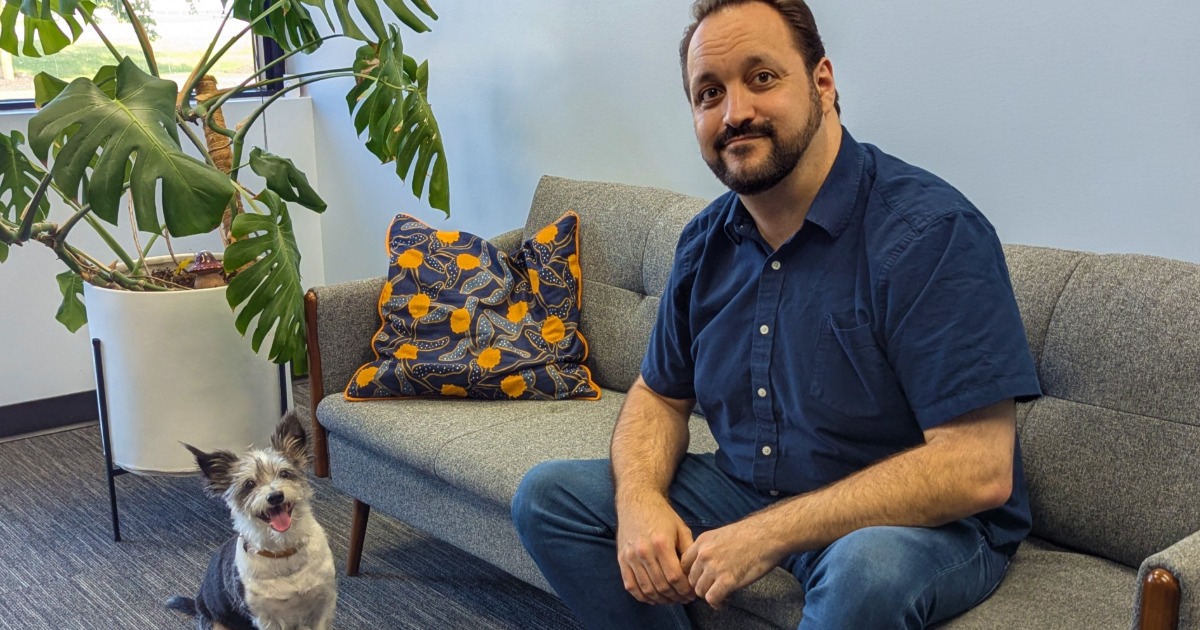Healthcare IT News spoke recently with Adam Darkins, MD, chief consultant of care coordination services at the Department of Veterans Affairs, about the ways VA is deploying technology to deliver care to service members returning from Iraq and Afghanistan.
[See also: VA to help veterans with diabetes with remote monitoring.]
Do you feel the U.S. health system is adequately set up to meet the mental and physical health needs of the thousands of soldiers returning – and those soon to return – from Iraq and Afghanistan? How can health IT help make sure those needs are met, and how has VA made use of it?
The VA, as you know, is very advanced in terms of its computerized patient record. And up until it introduced that patient record in the late 1990s, VA had been predominantly an inpatient hospital organization.
If you want to move services from hospitals into other settings – which VA has done, to 900 other clinics since the mid-1990s – if you move the staff there but don't have the information to be able make decisions and care for them, then it's really not altering where care takes place.
This expansion has taken place in two stages. The first was the introduction of the patient electronic health record, which enabled the movement of care into other sites than hospitals, making it more accessible.
But then you can build on top of that, which we've done since the late '90s, which is to use telehealth to change the location of care, and to save specialists from having to travel out long distances to peripheral clinics, and also to make specialty care available in places where you ordinarily might not find a specialist.
[See also: Psychological sensors to be incorporated in telehealth for service members.]
What are you most concerned about when it comes to ensuring the best care for returning veterans? Quality? Access?
Access is a big challenge, and it's one that Secretary Shinseki is determined is going to be met. The challenge really is one that all healthcare systems face. The VA has a mandate to provide care to veterans throughout the whole of the continental U.S., in Puerto Rico and the U.S. Virgin Islands, the Hawaiian Islands, and Guam. Given that remit, to provide physical services and make them accessible everywhere is really a huge and daunting task.
[See also: VA awards $19M contract for mobility network.]
New technology makes it possible to provide services by bringing services effectively to the patient, in instances where that's appropriate, rather than the patient having to travel all the way to the services.
For example, you're in Maine. A veteran who may be up in Caribou, instead of having to travel down to the VA center in Togus, which could be an eight-hour return journey – and that doesn't bear in mind what it might be with the snow in winter – can now see the mental health provider from Caribou to Togus without having to travel all that distance.
Continued on next page.
How has telehealth evolved in the years since VA started deploying it?
It started back in the late 1970s. They were essentially just pilots. The technology was expensive. The telecommunications was difficult to provide and essentially most of what took place back then was related to academic medical centers. They used technology to enable a single point-to-point connection. But it wasn't really something that could yet be used in mainstream health services. So it was really the influence of the VA's academic affiliates. The VA links to 103 academic medical centers around the country. A few of them were doing those kinds of pilots.
[See also: VA program to bring specialty care to veterans in rural areas.]
The change in developing telehealth came in the mid-1990s, really being seen as the technology was becoming more robust. More consumer technologies that could be used for video-conferencing. And the telecommunications possibilities – things such as ISDN – made it such a realistic thing to do in a routine fashion.
So the period between, say, 1997 and 2003, was taken up largely by doing point-to-point connections largely between VA medical centers and peripheral clinics. And then from 2003 onward, VA really began to systematize how it did telehealth. And it developed three large IT networks that provide areas of telehealth since then.
One provides video conferencing between hospitals and clinics. And essentially replicates what will be a face to face visit if someone were to attend the clinic. The person in Caribou sits in a consulting room, having been shown in by the staff there, and, if necessary, accompanied by the staff, has a clinic visit with the mental health provider, for example, who's in Togus.
The second area is called home telehealth: monitoring people in their homes with chronic disease. And one of the things that aligns to that is also doing video directly into the home.
And then the third area is called store-and-forward telehealth: taking digital image to be able to review elsewhere. The major applications for that are tele-retinal imaging to screen for diabetic eye disease, a cause of sudden blindness. Approximately 20 percent of veterans have diabetes, about 1.2 million.
In total, around 380,000 veterans had care in those three areas of telehealth last year.
The VA has considerable needs for aging veterans as well. The veteran population, for obvious reasons, comes from cohorts of people who have been in the military at certain times. Quite large numbers of the WWII population of veterans are elderly and infirm, and Korean War veterans. Those veterans are a major challenge.
And in addition to that, also, there's the return of the Iraq and Afghanistan returnees. So it's really the combination of both, combined with the changes of technology to make it more accessible.
[See also: DoD, VA release mobile app for PTSD therapy.]
What are some specific programs or applications of telehealth technology you think are most promising?
In 2007 we developed what was called the Polytrauma Telehealth Network. And that enabled us to connect 21 VA sites to care for people with polytrauma, that is multiple injuries – blast injuries, amputation, head injuries – returning from Iraq and Afghanistan. And link those 21 centers with four, at the time, national polytrauma centers.
This was to really deal with these severely injured people. And so we developed a videoconferencing network between all of these sites. There are 21 regions, called VISNs: Veterans Integrated Service Networks. In each one there was a coordinator responsible for the care for these people coming back with these severe injuries. What we did is to link them all with video conferencing. And also to connect that with Walter Reed Army Medical Center and Bethesda Naval Hospital.
So it was possible to really hand over patients as they moved between different parts of the system, and also to consult from within VA with the four major polytrauma centers: Tampa, Richmond, Palo Alto, Minneapolis. There's since been a fifth one built, in San Antonio.
Continued on next page.
What are the biggest challenges?
There are a number of challenges. The biggest, in terms of introducing technologies is really the human factor. Clinicians are used to doing things in the way that they've done them: seeing patients in person.
The VA is a remarkable organization. More than 100,000 of our staff have used, routinely, the electronic health record system. Some organizations have had trouble with even introducing electronic health records. So the VA has a very tech-savvy population. But the jump between [using EHRs] and actually seeing someone remotely, there's no current training in medical schools, anywhere in the country that I'm aware of, that formally trains medical students and residents in terms of how they would do healthcare using telehealth. One of our challenges has been to train the workforce.
[See also: VA links up with Western New York HIE.]
The second issue is just really, in some sense, dealing with emerging technologies. Making sure these systems are robust. What we're talking about is not an application that can fail. These are mission critical and supporting decisions that are critical about people's healthcare.
We've been building a technology infrastructure to be able to do videoconferencing. We have a national videoconferencing network for VA now, with more than 4,000 video endpoints, every single one of which can link to each other by direct dial via IP. So we have a really robust infrastructure. But that's taken us since 2007 – five years – to evolve into this large network where we have quality of service standards being introduced to do video.
We're just piloting this year – about to roll out in the course of the next year – a major initiative in terms of delivering care by IP video directly into the home. And by that what I mean is it's possible to link the VA's videoconferencing resources from its hospitals and clinics, through its firewall, through an expressway to be able to link to veterans' computers or laptops in their own homes. It's possible for them to download a small application that enables, essentially, IP video to be encrypted between their PC and a provider who's in a VA medical center. Currently have about 400 or 500 who've been managed in this way. We're anticipating this year that that number will be up to 1500. And we're targeting 15,000 by the end of next year.
There are obviously reasons why people have to come into hospitals and clinics for certain examinations, tests and procedures to be done. But certainly mental health lends itself directly into something that could be done directly into peoples' own homes.
The DoD and VA have long been seen as leaders in the innovative deployment of health information technology. Do you think its initiatives can serve as a model for similar projects in the private sector?
I think the answer is yes. A good precedent for this is to look at how the Internet developed. It started back in the '60s, with essentially ARPA, the forerunner of DARPA, which did something which was really very much confined to a high-end project. Then moved toward academic sites. Then it took until the mid- to late-'90s before the Internet became what it now is. So I think what we're broadly talking about is a sort of an "Internet for healthcare" that's being developed. And I think the return on investment for some of these things is not easy for the private sector because they're not going to see immediate returns after three months.
The difficulty is how do you get some of these infrastructures to scale? Because the value of them, it's like a telephone network. One telephone linking two people is of marginal value. The real value is a large network. So I think the value of what the VA and DoD are doing – and the Indian Health Service has been doing some work in this area, too – is to begin to develop the concept of telehealth networks of a sufficient size.
It's just a stepping stone. But I would personally predict that, five or seven years from now, a lot of the things that are being done we'll see as being routine in healthcare.
Check out these videos to learn more about the VA's telehealth initatives.


